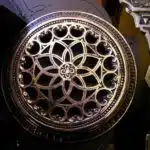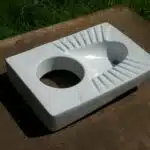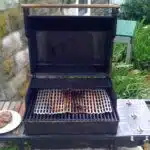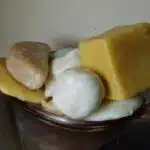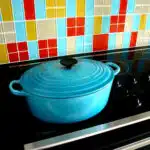Stove drip pans are an essential component of any cooking range. They protect the heating elements from food spills and prevent grease from dripping onto the burners. Over time, however, these drip pans can accumulate stubborn stains and debris, making them unsightly and difficult to clean. As a cleaning expert, I understand the importance of maintaining a clean and hygienic kitchen environment while also ensuring that your stove functions efficiently. In this article, I will provide you with practical tips on how to effectively clean stove drip pans without damaging them or leaving any residue behind.
Cleaning stove drip pans may seem like a tedious task, but it is essential for maintaining the longevity of your cooking range. Neglecting to clean them regularly can lead to a buildup of grease and grime that can cause unpleasant odors or even lead to fire hazards. Additionally, dirty drip pans can affect the quality of your food by spreading bacteria or causing uneven heat distribution. By following my advice on how to clean stove drip pans, you can ensure that your cooking range remains in top condition while also creating a safe and healthy cooking environment for yourself and others.
The Importance Of Regular Cleaning
Cleaning is an essential activity that should be done regularly to maintain the hygiene and functionality of various household items, including stove drip pans. Neglecting this task can result in a buildup of grease, grime, and other debris that can affect the performance of your stove burners. Moreover, dirty drip pans can also cause unpleasant odors and even pose a fire hazard if left unchecked.
The importance of cleaning stove drip pans cannot be overstated. Regular cleaning ensures that they remain in good condition and function optimally. The frequency of cleaning depends on how often you use your stove. For instance, if you cook daily or frequently, it’s recommended that you clean your drip pans once a week. However, if you don’t use your stove as often, once every two weeks might suffice.
Cleaning your stove drip pans may seem like a daunting task, but it’s worth the effort. Besides maintaining optimal functionality and preventing potential hazards, keeping them clean can also save you money in the long run by avoiding costly repairs or replacements. In the next section, we’ll delve into understanding your stove drip pans to help make the cleaning process more manageable.
Understanding Your Stove Drip Pans
- Drip pans come in various types, including steel, porcelain, and enamel.
- Cleaning of drip pans should be done regularly to ensure proper maintenance and prevent build-up.
- A mild dish detergent and a soft sponge should be used to clean the drip pans.
- Stubborn stains can be removed with a paste made of baking soda and water.
- In cases where the drip pans are significantly damaged, they should be replaced.
- It is important to ensure that the replacement drip pans are of the same size and type as the original ones.
Types Of Drip Pans
Keeping your stove drip pans clean is essential in maintaining a neat and hygienic kitchen. However, before you start cleaning them, it is important to understand the different types of drip pans available on the market. Drip pans are made from different materials such as porcelain, chrome plated steel, and aluminum.
Porcelain drip pans are the most common type of drip pans and are used for electric stoves. They are easy to clean and can withstand high temperatures. However, they tend to chip easily if not handled with care. Chrome plated steel drip pans are durable and do not rust easily. They give your stove a sleek look but require regular polishing to maintain their shine.
Aluminum drip pans are lightweight and affordable. They are ideal for gas stoves as they heat up quickly due to their thin material. However, they tend to discolor over time and may corrode if left uncleaned for long periods.
In conclusion, understanding the different types of drip pans available will help you choose the right one for your stove and ensure that you keep them clean regularly. Porcelain drip pans offer durability while chrome plated steel ones provide an aesthetic appeal. Aluminum drip pans offer affordability but require regular cleaning to prevent corrosion. Choose wisely based on your needs and preferences, ensuring that you maintain hygiene in your kitchen at all times.
Cleaning Drip Pans
Understanding the different types of drip pans available is just the first step in maintaining a clean and hygienic kitchen. The next step is to learn how to properly clean them. Different materials require different cleaning methods and products, so it’s important to know which type of drip pan you have before starting the cleaning process.
For porcelain drip pans, warm soapy water or a mixture of baking soda and water works well for removing stains and built-up grease. Chrome plated steel drip pans can be cleaned with a specialized chrome cleaner or a mixture of vinegar and water. Aluminum drip pans are best cleaned with a non-abrasive cleaner or a mixture of cream of tartar and water.
If you’re dealing with hard-to-remove stains on your drip pans, there are some hacks that can help. For example, soaking your drip pans in hot soapy water overnight can help loosen stubborn stains. Scrubbing with a paste made from baking soda and vinegar can also be effective. Another trick is to sprinkle salt over the stain and then scrub it with half a lemon.
In summary, keeping your stove drip pans clean is crucial for maintaining both the appearance and hygiene of your kitchen. Knowing the different materials used in making these pans will help you choose the best cleaning products and methods for each type. And if you encounter any tough stains, don’t worry – there are plenty of hacks available to help you get rid of them!
Replacing Drip Pans
As a cleaning expert, understanding your stove drip pans is essential for maintaining a clean and hygienic kitchen. In addition to knowing how to clean them properly, it’s also important to know when it’s time to replace them. Over time, drip pans can become damaged or worn out, which can make them less effective at catching spills and preventing stains on your stovetop.
If you’re wondering where to buy replacement drip pans, there are several options available. Many hardware stores and home improvement retailers carry a variety of sizes and styles to fit different types of stoves. You can also find replacement drip pans online from various retailers. When shopping for replacement drip pans, be sure to check the size and shape of your current pan so that you purchase the correct one.
Proper maintenance can help extend the life of your drip pans, but eventually they will need to be replaced. Signs that it’s time for a new set of drip pans include cracks, warping, or rusting. Additionally, if you notice that your stove is not heating evenly or that spills are not being adequately contained by the drip pan, it may be time for an upgrade. By keeping an eye on the condition of your drip pans and replacing them as needed, you can ensure that your kitchen stays clean and functional.
Preparation For Cleaning
Before jumping into cleaning your stove drip pans, there are a few pre-cleaning steps that you should consider. Firstly, ensure that the stove is cool and disconnected from the power source. This will help prevent any accidents from occurring during the cleaning process. Next, remove the drip pans carefully and inspect them for any damage or wear and tear. If you notice any issues, consider replacing them before cleaning.
To effectively clean your stove drip pans, you will need some necessary equipment. Gather some rubber gloves to protect your hands, a sponge or cloth for wiping away grime, a scrub brush for tougher stains, and some dish soap or a specialized cleaner designed for stove drip pans. Having these tools on hand will help make the cleaning process more efficient and effective.
Proper preparation is key to achieving successful results when cleaning your stove drip pans. By following these pre-cleaning steps and gathering all necessary equipment beforehand, you’ll be able to tackle even the toughest stains with ease. Now that we have covered prepping for cleaning let’s move onto removing loose debris to get started on making those drip pans shine again!
Removing Loose Debris
Imagine your stove drip pans as a canvas for cooking artistry. Each time you cook, the pans bear witness to your culinary creations. However, over time, these pans accumulate loose debris that can be challenging to clean. The accumulation of grease, burnt food bits, and other substances can make it difficult to achieve a pristine look. But fear not! With the right tools and techniques, you can remove all the unsightly loose debris from your stove drip pans.
Loose debris removal is an essential first step in cleaning your stove drip pans. Begin by removing any bits of food or debris from the surface of the pan with a scraper or spatula. You can also use a soft-bristled brush to sweep away any loose particles that may be stuck on the surface of your drip pans.
When it comes to tools for cleaning stove drip pans, there are several options available in the market. You can opt for commercial cleaners that are specially formulated for this purpose, or you can go with natural cleaners like vinegar and baking soda. Regardless of which option you choose, ensure that you follow the instructions carefully and wear gloves to protect your hands from harsh chemicals. In the next section, we will discuss soaking as an effective method for cleaning stubborn stains on your stove drip pans.
Soaking The Drip Pans
After removing any loose debris from your stove drip pans, the next crucial step is soaking them. Soaking is an essential process that helps to loosen tough stains and grease build-up, making it easier to scrub them off later. It saves you time and energy since you won’t have to spend too much time scrubbing stubborn stains. Additionally, soaking ensures that you do not damage the surface of the drip pans.
When it comes to soaking solutions, there are several options available, but not all of them work effectively. The best soaking solutions for stove drip pans include a mixture of baking soda and vinegar or dish soap and hot water. These solutions are effective in breaking down grease and grime, leaving your drip pans looking clean and shiny. You can also add other ingredients like lemon juice or hydrogen peroxide for extra cleaning power.
Soaking your stove drip pans has numerous benefits that cannot be overlooked. Apart from saving you time and energy spent scrubbing tough stains, it also prolongs the lifespan of your drip pans by preventing damage during cleaning. Additionally, it ensures that your kitchen remains hygienic by getting rid of harmful bacteria lurking on dirty surfaces. Therefore, take some time to soak your stove drip pans regularly using the best solutions available for optimal results.
To proceed with scrubbing with a soft brush, drain the soaking solution from the pan using a strainer or colander over a sink or bowl beneath to catch any particles left behind. Then rinse each pan thoroughly under running water before gently scrubbing using a soft-bristled brush or sponge until all dirt is removed. Ensure you get into all corners and crevices without applying too much pressure as this may cause scratches on the surface of the pan. Rinse again under running water before wiping dry with a clean cloth or paper towel . Once the pan is fully dry, store it in a cool, dry place until its next use. Avoid stacking other pots and pans on top of it, as this can scratch the surface and cause damage. With proper care and maintenance, your pan will last for years to come.
Scrubbing With A Soft Brush
To effectively clean stove drip pans, using a soft brush is an essential technique. This method allows for gentle yet thorough cleaning without damaging the surface of the pan. Soft brushes come in various shapes and sizes, and it’s important to choose one that suits the size and shape of your drip pans.
When scrubbing with a soft brush, start by applying a cleaning solution to the pan. You can use any commercial cleaner or make your own by mixing equal parts water and vinegar. Allow the solution to sit for a few minutes so that it can penetrate any tough stains or grime. Next, use the soft brush to scrub gently in circular motions. Pay special attention to areas with stubborn stains.
Soft brush techniques are especially useful when dealing with tough stain removal on stove drip pans. For instance, if you have burnt-on food or grease stains, you might need to apply more pressure while scrubbing with the soft brush. Additionally, you may want to use a specialized cleaner designed specifically for tough stain removal. These cleaners typically contain stronger chemicals such as bleach or ammonia and should be used with caution.
To summarize, scrubbing with a soft brush is an effective way of cleaning stove drip pans. It allows for gentle cleaning without damaging the surface of the pan while reaching even hard-to-reach areas. To maximize results, consider purchasing specialized cleaners for tougher stains or preparing solutions using vinegar and water at home. In the next section, we will explore another method that involves using baking soda and vinegar to clean stove drip pans seamlessly.
Using Baking Soda And Vinegar
After scrubbing with a soft brush, another method for cleaning stove drip pans is by using baking soda and vinegar. However, before diving into this alternative cleaning method, let us first establish the benefits of using vinegar. Vinegar, a common household item, has been proven to have some disinfectant and deodorizing properties. It is also an excellent natural stain remover that can break down grease and grime. Its acidic nature makes it effective in removing mineral deposits such as rust.
To clean the stove drip pans using baking soda and vinegar, start by removing the pans from the stove and washing them with warm water and dish soap. Then sprinkle baking soda generously over the surface of each pan until they are fully covered. Next, pour vinegar over the baking soda until it starts to fizz. Leave it to sit for about 15 minutes before rinsing off with warm water.
While this method may seem simple enough, there are alternative cleaning methods that you can try out too. For example, using hydrogen peroxide or ammonia mixed with water can also do the trick. However, be cautious when handling these chemicals as they could be harmful if not used properly. Ultimately, whichever method you choose to use will depend on your personal preferences and what works best for you.
To continue with the cleaning process of stove drip pans, applying dish soap is essential in getting rid of any remaining grime or grease on the surface of the pans. Dish soap helps cut through tough stains while also leaving a pleasant scent behind after washing off. Simply apply dish soap onto each pan’s surface and wash thoroughly under running water before drying them off completely with a clean cloth or paper towel.
Applying Dish Soap
To apply dish soap on your stove drip pans, you will need to gather the necessary cleaning supplies. First, ensure that you have a sponge or scrub brush specifically designed for cleaning dishes. Additionally, make sure that you have a bottle of dish soap that is gentle enough to clean but tough enough to remove stubborn stains and grime.
Once you have gathered all of the necessary supplies, it’s time to begin applying dish soap to your stove drip pans. Start by removing the drip pans from your stove and placing them in a sink or basin filled with hot water. Add a generous amount of dish soap to the water and mix well until it becomes sudsy. Using your sponge or scrub brush, begin scrubbing each drip pan thoroughly, paying special attention to any areas with built-up grease or food debris.
Benefits of using dish soap for cleaning stove drip pans are numerous. It is not only effective in removing tough stains and grime but also gentle enough not to damage your stove’s surfaces. Moreover, dish soap is readily available and affordable compared to other alternatives that may require purchasing specialized cleaners or chemicals. Alternatives for using dish soap when cleaning stove drip pans include vinegar or baking soda solutions which could work effectively depending on the level of dirtiness on the pans.
Using Ammonia
Ammonia is a popular cleaning solution that can be used to clean stove drip pans. This powerful chemical works by breaking down and dissolving grease, grime, and other stubborn stains on the surface of the drip pans. To use ammonia for cleaning stove drip pans, you will need to follow some basic safety precautions to avoid any accidents.
Firstly, it is essential to wear protective gloves and eyewear when handling ammonia. Also, ensure that you open the windows or turn on the ventilation system while cleaning with ammonia since it produces fumes that can be irritating to your eyes and respiratory system. When using ammonia for cleaning stove drip pans, you should mix equal parts of ammonia and water in a large plastic bag or container.
Alternative methods for cleaning stove drip pans exist, including using baking soda or vinegar. Baking soda works by creating an abrasive paste that can help remove burnt-on food particles from the surface of the drip pans. Vinegar is also an excellent alternative as its acidic nature helps dissolve grease and grime from the surface of the pans. These methods are safer than using ammonia since they don’t produce harmful fumes. However, they might require more time and elbow grease than ammonia does.
Transition into subsequent section: Now that you’ve learned how to clean your stove drip pans using ammonia let’s move onto another crucial area in your kitchen – Cleaning electric burners!
Cleaning Electric Burners
Electric burners are a common feature in most households. They are easy to use and maintain, but cleaning them can be a bit of a challenge. The key to keeping your electric burners clean is by cleaning them regularly. This way, you can avoid buildup of grease and grime that can make cleaning more difficult.
When it comes to cleaning electric burners, the first step is to remove the burner coils. These coils can be easily lifted out of the stove with a gentle tug. Once removed, wipe down the coils with a damp cloth or sponge. If there is any stubborn residue on the coils, you can use warm soapy water or a non-abrasive cleaner to get rid of it.
After cleaning the burner coils, move on to cleaning the drip pans. Electric stove drip pans are typically made from porcelain or chrome-plated steel and are designed to catch any spills or drips from your pots and pans. To clean them, start by removing any loose debris with a brush or scraper. Then soak them in warm soapy water for several minutes before scrubbing them gently with a soft brush or sponge.
Next up is cleaning gas burners!
Cleaning Gas Burners
Maintaining a clean gas burner is essential to ensure that it operates efficiently and safely. A dirty burner can cause uneven flames, soot buildup, and even gas leaks. Proper gas burner maintenance should be a part of your routine cleaning tasks.
Troubleshooting gas burners may seem like an overwhelming task, but it’s actually quite simple. Here are some tips for keeping your gas burners in great condition:
- Clean the burners regularly with mild soap and warm water.
- Check the flame pattern periodically to ensure that the flame is blue and consistent.
- Remove any debris from the burner holes with a toothpick or needle.
By following these tips, you can keep your gas burners functioning optimally. However, if you encounter any issues with your gas burner that cannot be resolved through regular maintenance, consult a professional.
Now that you have cleaned your gas burners thoroughly, it’s time to dry the drip pans. This step is crucial to prevent rusting and corrosion on the pans. Follow these simple steps:
- Wipe down the drip pans with a clean cloth to remove any remaining moisture.
- Place them in a well-ventilated area and let them air dry completely.
- Once they are dry, place them back on top of the stove burners.
Incorporating this step into your cleaning routine will help prolong the life of your drip pans and keep them looking as good as new.
Drying The Drip Pans
Once you have thoroughly cleaned your stove drip pans, it is essential to let them air dry completely before using them again. Air drying is critical because any remaining moisture can cause rust or corrosion, and it can also damage the heating element of your stove. To ensure that your drip pans are entirely dry, place them in a well-ventilated area and leave them untouched for at least 24 hours. Avoid using towels or paper towels to dry them since these materials can leave behind fibers that may fuse to the surface.
If you need to use your stove immediately and cannot wait for the drip pans to air dry, you can use a hair dryer to speed up the process. Place the hairdryer on its lowest setting, hold it about six inches away from each pan’s surface, and move it around slowly until all the moisture has evaporated. However, be careful not to overheat or melt the plastic coating on some drip pans by holding the hairdryer too close for too long.
After ensuring that your drip pans are entirely dry, check them for any signs of wear and tear such as cracks or chips. If they are damaged beyond repair, you should replace them with new ones. In contrast, if they are still in good condition but have accumulated stubborn stains or grease buildup over time, repeat the cleaning process until they look brand new again. In this way, you can prolong their lifespan while keeping your stove clean and functional.
Replacing Drip Pans
When replacing drip pans, it is important to choose replacement pans that are the same size, shape, and material as the original. Additionally, it is important to ensure that the replacement pans fit securely in the stove. When installing the replacement pans, make sure the burner holes line up properly with the stove and the pans are level. Lastly, it is recommended to use a high-grade cleaner to clean the drip pans and the area around the stove before installing the replacement pans.
Choosing Replacement Pans
When it comes to replacing drip pans, choosing the right replacement pans is crucial to ensure your stove stays in good condition. One of the most important factors to consider when choosing replacement pans is the materials they are made from. While there are various materials available, stainless steel and chrome are popular options due to their durability and resistance to corrosion. They are also easy to clean, which is ideal for those who want to keep their stove looking new.
Another factor that you should consider when choosing replacement pans is cost. The cost of replacement pans can vary widely depending on the materials used and the brand you choose. While it’s tempting to opt for cheaper options, investing in higher-quality replacement pans can save you money in the long run. Cheaper options may not last as long or be as durable as more expensive ones, so it’s important to weigh up your options and choose the best value for money.
Ultimately, choosing replacement drip pans requires careful consideration of several factors. When making your decision, take into account the materials used and cost considerations. By doing so, you’ll be able to find high-quality replacement pans that are both functional and aesthetically pleasing. Remember that investing in quality replacements now will save you both time and money down the line.
Installing The Pans
Now that you have chosen the right replacement drip pans for your stove, it’s time to install them properly. Installing drip pans may seem like a straightforward task, but there are several things to keep in mind to ensure that they are installed correctly. One of the pros of replacing your old drip pans is that new ones can improve the appearance of your stove, making it look newer and cleaner.
Before installing the new drip pans, make sure to clean the area thoroughly. This will ensure that no dirt or debris gets trapped between the stove and the new pan. Additionally, be sure to align the holes in the new pan with those on your stove before securing them in place. Another installation tip is to avoid over-tightening the screws as this can damage both the pan and your stove.
While installing new drip pans has its advantages, there are also some cons to consider. For instance, if you do not install them correctly, they may not fit properly or could become dislodged easily when cooking. It’s also important to note that some replacement pans may not be an exact match for your original ones, which can affect their performance. However, by following proper installation techniques and choosing quality replacement pans designed for your specific stove model, you can avoid these issues and enjoy all of their benefits.
Tips For Preventing Future Buildup
Like a diligent farmer tending to their land, preventing future buildup on stove drip pans is the key to maintaining a clean and efficient cooking space. The first step in preventing buildup is to wipe down the drip pans after each use. This will help prevent any residue from hardening and becoming difficult to remove later on.
Another preventive measure is to line the drip pans with aluminum foil or reusable liners. This will help catch any spills or splatters before they have a chance to bake onto the surface of the pan. It’s also important to keep an eye on your burners and adjust them as needed, as uneven heat can cause more spills and messes.
Lastly, regular maintenance techniques such as deep cleaning every few months can help prevent future buildup. Soak the drip pans in hot soapy water for several hours before scrubbing away any remaining stains or residue. For tougher stains, consider using a mixture of baking soda and water or vinegar and baking soda paste. With consistent maintenance, you can keep your stove drip pans looking like new for years to come.
In light of these preventive measures and maintenance techniques, it’s clear that keeping your stove drip pans clean doesn’t have to be a daunting task. By simply wiping down after each use, lining with aluminum foil or reusable liners, adjusting burners regularly, and deep cleaning every few months, you can ensure a clean cooking space for yourself and others. In the next section, we’ll explore some final thoughts on how to maintain a sparkling kitchen environment without breaking a sweat.
Final Thoughts
To maintain a clean and well-functioning stove, it is important to regularly clean the drip pans. These pans are designed to catch any spills or drips from cooking, but they can easily become dirty and stained over time. By using the right maintenance techniques, you can keep your stove looking like new and functioning properly.
Cleaning frequency is an important consideration when it comes to keeping your stove drip pans in good condition. Ideally, these should be cleaned after every use to prevent any buildup of grease or food particles. However, if you find that this isn’t possible due to a busy lifestyle, aim for at least once a week. This will help prevent any stubborn stains from setting in.
To effectively clean stove drip pans, there are a few key steps to follow. First, remove the pans from the stove and give them a good wipe down with a damp cloth or paper towel to remove any loose debris. Next, fill your sink with hot water and add a few drops of dish soap or baking soda. Allow the pans to soak for at least 10 minutes before scrubbing them with a non-abrasive scrubber or old toothbrush. Rinse thoroughly with hot water and dry before placing them back on the stove.
Remember that regular maintenance is key when it comes to keeping your stove in top condition. By following these simple cleaning tips on a regular basis, you can ensure that your appliance stays looking great and working efficiently for years to come. Happy cleaning!
Conclusion
Regular cleaning of stove drip pans is essential for maintaining the look and performance of your kitchen appliance. Understanding the type of drip pan you have will help determine which cleaning method to use. Before cleaning, remove loose debris from the drip pans and soak them in a mixture of hot water and dish soap for at least 30 minutes. After drying, replace the clean drip pans back into their designated spots.
To prevent future buildup, consider using aluminum foil or purchasing reusable liners for your stove drip pans. By taking these preventative measures and regularly cleaning your stove drip pans, you can keep your kitchen looking pristine and maintain the efficiency of your appliance.
In conclusion, keeping stove drip pans clean is crucial for both aesthetic and functional purposes. Neglecting to clean them can lead to unsightly buildup that can affect the overall performance of your stove. Think of it like brushing your teeth – regular maintenance prevents bigger problems down the line. So take care of your stove drip pans with diligence and care, and enjoy a sparkling kitchen that’s ready for any culinary adventure you embark on!
Image Credits
- “Cheese Drip on an iittala Saucepan” by Didriks (featured)



